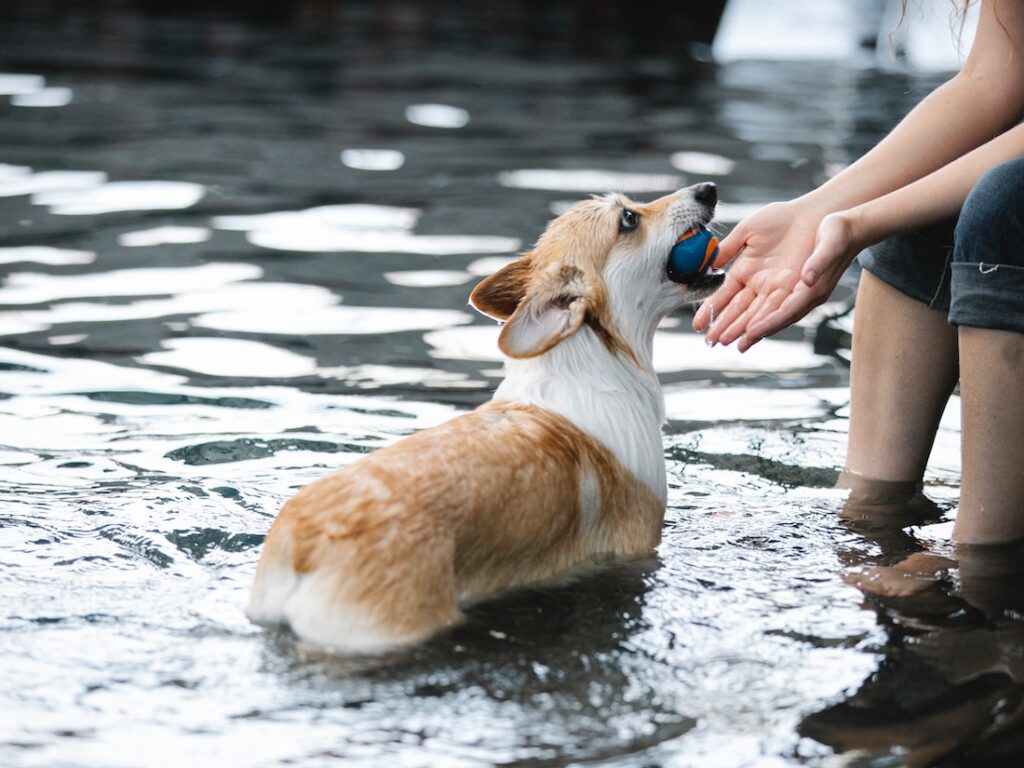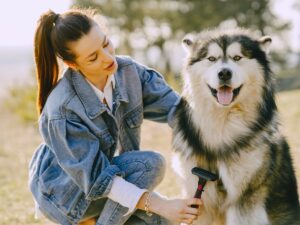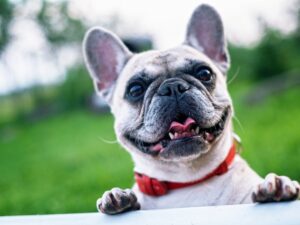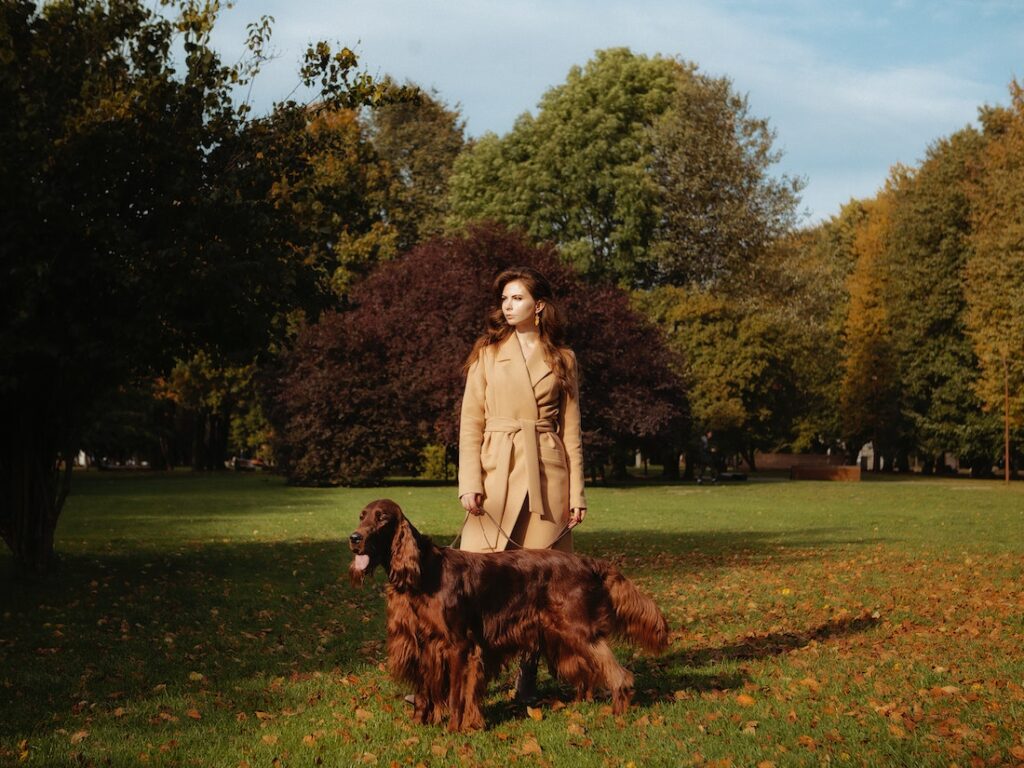Being a pet parent is a busy task, and most dog owners have their schedules filled with playing, feeding, and walking their dogs. This often results in their pet’s grooming and bathing needs being neglected, which can adversely affect its health and fitness.
It is also essential to keep these furry companions active, playful, and happy. Therefore, it is better to have a regular appointment with a professional groomer or set aside a few hours every two weeks to do these chores yourself.
How often should my dog get groomed?

Dog grooming needs vary from breed to breed depending on the length, thickness, and texture of their coat. Most experienced professional groomers recommend the following specifications according to a dog’s coat type:
Short-haired Dogs
Short-haired dogs are unsurprisingly low maintenance and need occasional baths every 4-6 weeks with regular brushing. Brushing their coat with a curvy brush at least once a week could significantly reduce shedding, which most dogs under this category suffer from, as it removes debris and distributes oils throughout their fur.
Haircuts are not recommended for short-haired breeds like Boston terriers, pinschers, Dobermans, and pugs since the coat is too close to the skin and poses a danger of injuries.
Long-haired Dogs
Groomers recommend brushing your dog’s long hair daily and even twice daily for healthy growth and a longer coat. Brushing helps untangle the hair, which, if ignored for too long, can turn into painful mats that cause a lot of discomfort for your pet.
Putting off brushing for too long may result in more frequent visits to a professional groomer to de-mat the coat. A bath every 4-6 weeks and a haircut every 10-12 weeks keep these tangles at bay and your dog’s skin healthy.
Dogs with Thick Undercoats

Undercoats are necessary for insulating breeds like huskies, golden retrievers, Labrador retrievers, and Pomeranians, but they are also prone to matting.
Therefore, double-coated dogs need to be brushed with an undercoat rake with rotating twines instead of sharp blades every once or twice a week so the growth of their undercoats is not affected.
An 8-12 week gap between every undercoat groom and at least a month between a proper bath and trim strikes a good balance between hygiene and a well-regulated undercoat.
Silky-haired Dogs
Silky-haired dogs like the Chinese crested, silky terrier, cocker spaniel, and Afghan hound tend to have oily skin and no undercoat. This is why professionals recommend bathing them often with water with baking soda added to it so their skin’s pH remains balanced.
Owners that prefer their silky-haired dogs with short-length fur should schedule salon visits every four to eight weeks for a trim. Combing their silky coat regularly will also help distribute the natural oils that keep their coat shiny and smooth.
Curly and Wavy-haired Dogs
Owners of curly and wavy-haired dogs consider themselves lucky since these pets rarely shed, but they forget the frequent matting, which may worsen to a point where they have to be shaved bald.
While it cannot be completely avoided, matting can be significantly reduced by brushing from the skin outwards with a slick brush at least thrice a week.
Visits to a professional groomer and baths should be scheduled once a month. It is also recommended to include an appropriate shampoo that meets their individual needs and removes any dirt and debris caught in their fur in these dogs’ bathing routine.
Terriers and Wirey-Coated Dogs
Airedales, fox terriers, Yorkshire terriers, and Scottish terriers have wire-like coats with rough and bristly ends. This results in matted hair developing quite close to the skin. Therefore regular brushing is recommended at intervals of 1-2 days only.
Hand-stripping and tidying outlines should also be included in the grooming sessions, which are necessary every 4-6 weeks. The frequency of haircuts varies according to breed, but light trims around the face, paws, and ears should also be scheduled with regular grooming visits.
What are some tools to keep in an at-home grooming kit?
 Getting your dog groomed professionally is convenient but taking a more personal approach and putting in the effort at least once a month helps you keep your pet in check for any diseases before they worsen and also gives you some bonding time with them.
Getting your dog groomed professionally is convenient but taking a more personal approach and putting in the effort at least once a month helps you keep your pet in check for any diseases before they worsen and also gives you some bonding time with them.
The following tools can help you build a standard grooming toolkit which you can then expand to preferences and needs according to your dog’s breed;
- Brush/comb/rake
- Shampoo and conditioner – It is important to ensure that the products used are formulated for dogs; otherwise, they may irritate your dog’s skin.
- Ear cleaner
- Eyewash
- Toothbrush and toothpaste
- Nail clippers
- Nail filer
- Grooming blow-dryer(optional)
For the safety of both you and your pet, professionals suggest leaving the trimming and cutting up to them since the scissors and shears are sharp enough to injure your furry friend with one wrong move.
Conclusion
To summarize, most short and silky-haired dogs require more attention to brushing than bathing and grooming, while thick-coated, long-haired, and curly-haired dogs, as well as most terriers, prefer a more regular bathing routine. It is best to refer questions regarding certain grooming tools and products to a professional, so your pup is properly taken care of.
Lastly, even if you prefer to groom your dog at home, it is crucial to schedule visits to a salon or groomer every 2-3 months to ensure you’re on the right track.

